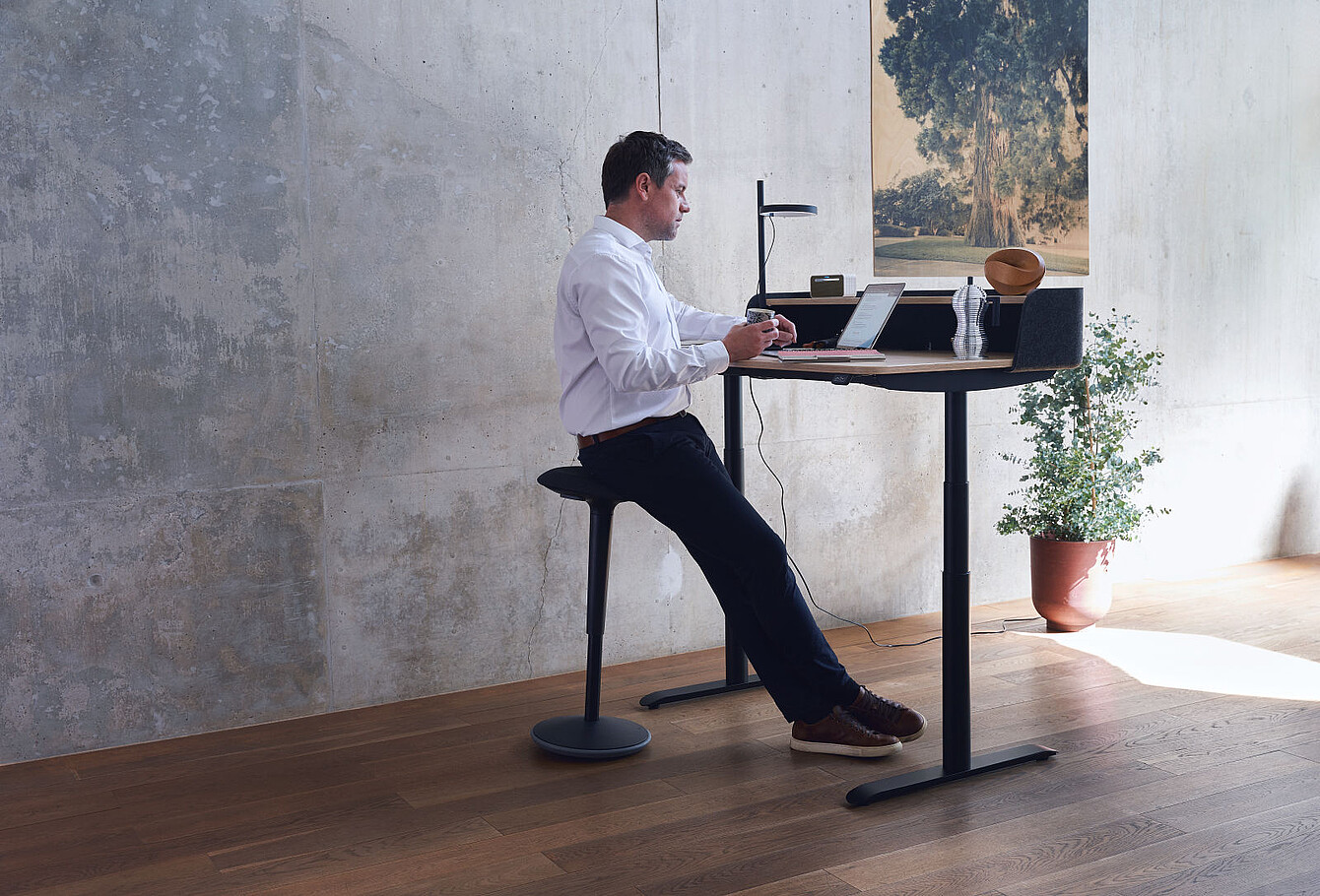Here are seven ergonomic tips to help you work healthily and efficiently from home:

1. Adopt different postures
The human body is designed for movement. Instead of staying in the same position for hours on end, you should adopt different postures. A change of position promotes blood circulation and is good for the muscles. For example, phone calls can be made while standing or walking, while emails can be written as voice dictation while lying on the sofa. Ergonomics experts emphasise that the best posture is always “the next one”.
2. An ergonomic office swivel chair - the ‘throne’ for good posture
An ergonomic chair is essential for working at a desk for long periods of time. Such a chair should be adjusted so that the feet are flat on the floor and the knees form a 90-degree angle. A flexible backrest supports the back in any position. However, as sitting for long periods can be harmful, you should regularly lean back and keep moving to promote blood circulation and reduce pressure on the intervertebral discs in your spine.
3. Equipment to improve performance and posture
The right technical equipment also plays a role in ergonomics. If you work at a desk for long periods of time, you should use an external keyboard, mouse and, if possible, a separate monitor. When working with a laptop, a laptop stand can help to set the correct height for the screen to avoid tension in the neck area.
4. Smart devices enable smart postures
Tablets and smartphones allow flexible working, but they pose ergonomic risks if they are used in unnatural positions for long periods of time. Tablets are best used with an external keyboard for creating content. A relaxed position on the sofa is also fine for reading tasks or surfing the internet, as long as it does not become a permanent posture. Make sure your back is adequately supported.
5. Sit actively to keep the body moving
Movement is essential for our health. The human metabolism is strongly linked to physical activity. To minimise the health risks of sitting for long periods of time, you should sit actively - in other words, change your sitting position regularly and remain dynamic. Simple movements such as rocking your chair or changing your sitting position promote blood circulation and increase your ability to concentrate.
6. Standing to change posture
Some tasks can be done while standing or even walking. Phone calls, messages and video conferences are ideal for standing. Standing increases blood circulation and boosts brain activity. If you make regular use of this option, you can create a healthy change from sitting.
7. More movement by changing jobs
To integrate more movement into your daily routine, it can be helpful to change your place of work occasionally. Temporary tasks can be carried out in the kitchen or dining room. Even if you only work there for a short time, ergonomic chairs provide good support here too. Breaks should be consciously used, so leave the workplace and activate the body through movement.
Ergonomics is not just a question of the right equipment, but also of personal posture and movement. By consciously adopting different postures, regularly changing position and using ergonomic furniture, we can significantly improve our well-being and performance in the home office.

social media channels:


